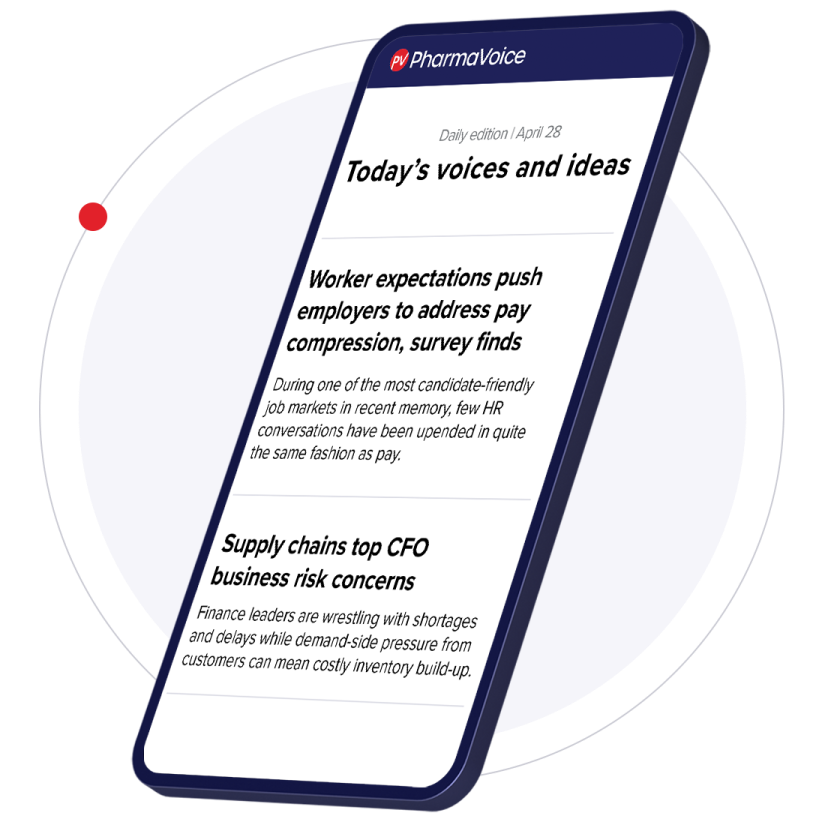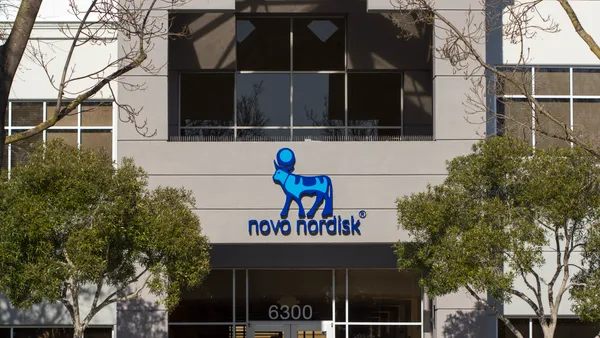Eminent scientist Leo H. Sternbach, Ph.D., is being inducted into the National Inventors Hall of Fame nearly 42 years after his landmark invention Valium was approved by the FDA. PharmaVOICE is taking this opportunity to honor Dr. Sternbach, 97, for his extraordinary achievements. We would like to thank Roche, Dr. Sternbach’s son, Daniel Sternbach, Ph.D., and Dr. Sternbach’s friends and former colleagues, Jeff Tilley, Ph.D., and Milan Uskokovic, Ph.D. , for making this article possible. What began as a boyhood fascination with chemicals and fireworks became a prolific and acclaimed career, highlighted by the invention of Valium. But for Leo H. Sternbach, Ph.D., it was all about a love of chemistry and making a difference in people’s lives. “It has brought me great comfort to know that I could, in some way, help people feel better,” Dr. Sternbach says. “Being a chemist, I spent most of my life working in a laboratory, hoping that I could make a difference. Knowing that Valium has positively impacted the lives of millions of people all over the world, and that my research has paved the way for other such discoveries, is one of the most rewarding experiences of my life.” This month, as Dr. Sternbach turns 97, his achievements are being recognized with his induction into the National Inventors Hall of Fame. The ceremony takes place on May 14. Despite his illustrious achievements, Dr. Sternbach is far from complacent about this or any other recognition. “I don’t think he sits around waiting for these honors; he’s always pleasantly surprised,” says his son, Daniel Sternbach, Ph.D., who has followed in his father’s footsteps with a career in medicinal chemistry. “I don’t think he has the expectation that he should get this or any other award, but he certainly enjoys it when he gets the recognition.” Former colleague and long-time friend Jeff Tilley, Ph.D., senior director of discovery chemistry at Roche, would agree. “Leo is a humble man, proud of his accomplishments, who likes interacting with people,” Dr. Tilley says. Hoffmann-La Roche U.S. President and CEO George Abercrombie has described Dr. Sternbach as an inventor’s inventor; he had a 63-plus-year history with Roche replete with extraordinary achievements. Dr. Sternbach holds 241 U.S. patents and has contributed to more than 122 publications and six monographs. Though Dr. Sternbach retired from Roche in 1973, he spent the next 20 years making daily trips to his office in Nutley, N.J., consulting, talking to colleagues and young scientists, answering letters, and ultimately working on his biography, “Good Chemistry: The Life and Times of Valium Inventor Leo Sternbach,” which was published in 2003. “I like to keep up with what is going on, not only in chemistry, but in the world,” Dr. Sternbach says. Friends and colleagues continue to be inspired by his achievements and the example he set as a scientist. “He is really a giant of medicinal chemistry, and that is something that has been widely recognized,” says Milan Uskokovic, Ph.D., VP for medicinal chemistry at BioXell Inc., a spin off of Roche, and a chemist at Roche from 1960 to 1995. “It was the biggest privilege to be close to him and to learn his trade, how to become a modern medicinal chemist.” “Leo is held up in Roche as the standard that other medicinal chemists would like to aspire to,” Dr. Tilley says. “Clearly his legacy has very strongly influenced our culture here in terms of people’s desire to have some measure of accomplishment that might be comparable to his. Nobody has come close since Leo.” A Dramatic Relocation “From an early age, my father enjoyed experimenting with chemicals,” Dr. Daniel Sternbach says. “He liked to make fireworks when he was a teenager; he’d experiment with making different powders that exploded and had colored flames.” That inquisitiveness paid off; in 1929 Dr. Sternbach earned a master’s in pharmacy from the Jagiellonian University in Krakow, Poland; in 1931 he earned his Ph.D. in organic chemistry. The young graduate spent six years as a research assistant to Professor K. Dziewonski before joining the Swiss Federal Institute of Technology in Zurich as an associate of Professor L. Ruzicka. In a path so well-known to pharmaceutical researchers today, Dr. Sternbach made the switch from academia to industry in 1940, joining Hoffmann La-Roche as a senior research chemist. His attraction to the company was evidently powerful; he stayed in chemistry, and with Roche, until his retirement — and even after. In 1941, with anti-Semitism on the rise and fears of Nazi occupation of Switzerland, Roche sent its Jewish scientists to the United States for safety. Among them were Dr. Sternbach and his new wife, Herta. Roche organized travel documents, including a Swiss passport, and, after an escape that took them through France and Portugal, Dr. and Mrs. Sternbach were met in Jersey City by Roche officials. “The escape is a complex story in itself, but suffice it to say, we were fortunate enough to make it safely through,” Dr. Sternbach says. Dr. Uskokovic says it was the goal of many Eastern European chemists of Dr. Sternbach’s generation to come to America. “America offered a huge opportunity to participate in the most innovative research at any level,” Dr. Uskokovic says. “Dr. Sternbach was one of the most brilliant examples of this generation of Eastern European scientists.” His arrival in the United States marked the start of many hours of research, experiments, and collaborations that led to the development of numerous breakthroughs. Products that have emerged from his laboratory include Librium, Quarzan (clidinium bromide), Mogadon (nitrazepam), Klonopin (clonazepam), and, most famously, Valium (diazepam). Scientific Spectrum Discovery in pharmaceutical chemistry is a long-term commitment. Like most scientists, Dr. Sternbach spent many years focused on research, excited by the work itself rather than the prospect of promotion. “Leo relished chemistry and was a confident chemist,” Dr. Tilley says. He explains that underlying Dr. Sternbach’s success with benzodiazepines, and the fame that has brought him and Roche, was a willingness to tackle novel chemistry problems. Dr. Sternbach’s first major achievement came in 1949 with the first commercially feasible synthesis of biotin, a member of the vitamin B complex group with important biochemical functions in the metabolism of fat and carbohydrates and in the breakdown of amino acids. The work was done in collaboration with his colleague Moise Goldberg. For many years, biotin was a key asset in Roche’s vitamins arsenal, and it was only in 2003 that Roche sold its Vitamins and Fine Chemicals business to DSM of the Netherlands. “That was a monumental contribution to natural product chemistry,” Dr. Uskokovic says. Dr. Sternbach also did research in the anti-infective area and he made significant contributions to heterocyclic chemistry, in which atoms of more than one kind are combined in a molecular ring. With the discovery of benzodiazepines in the 1950s by Dr. Sternbach along with his colleagues Lowell Randall and Earl Reeder, his accomplishments in the CNS area were established, and that became the principle area of his subsequent work. “In general, chemists are fairly flexible in terms of what they work on because, no matter the area, they’re still making molecules,” Dr. Daniel Sternbach says. “But I think there’s some value in having an area of focus, because the chemists get to learn and have a feeling about which molecules will be useful to make and which will not based on their experience.” The research that led to the discovery of Valium began in 1954, when Dr. Sternbach began working with a novel group of compounds that possessed unique chemical properties, which led to the discovery of the class of tranquilizers to which Valium belongs, the benzodiazepines. Benzodiazepines act on GABA — gamma amino butyric acid, the most important inhibitory neurotransmitter in the brain — to bring relief from the symptoms of anxiety and its related disorders. The first benzodiazepine to be marketed by Roche was Librium. In 1963, Valium came to the market and went on to become one of the industry’s first blockbuster products. Between 1969 and 1982, Valium was the most prescribed drug in the United States. In 1978, for example, 2.3 billion doses of Valium were taken. Dr. Sternbach also developed Arfonad (trimetaphan camsilate) for minimizing bleeding during surgery on the central nervous system. With Dr. Sternbach’s achievements in CNS came more resources and greater flexibility. By the 1960s, he was overseeing a team of 20 Ph.D.s as well as junior chemists. Dr. Sternbach’s legacy is incalculable. Even today new treatments emanating from his research with benzodiazepines are being investigated to treat depression, anxiety, and Alzheimer’s disease. “We set out to create new options in an attempt to improve the quality of life of patients suffering from anxiety disorders,” Dr. Sternbach says. “Medicines have come a long way in the last 40 years, but it is rewarding to see the tremendous impact Valium still has on patients’ lives today. I am proud to say that I was a part of the discovery process, and I’m proud to say I am still a part of Roche.” Many changes have occurred in the field of medicinal chemistry since Dr. Sternbach’s retirement: the tools have progressed; more is known about how drugs interact with their receptors; and the human genome has been mapped. “The challenge back then was making enough compounds because they would test in animals right away,” Dr. Daniel Sternbach says. “At the time, the chemist was perhaps the biggest factor in the whole process.” Today, expectations are higher, with a requirement for ever-more sophisticated toxicology studies and the public demanding drugs without side effects. “We’ve added more and more hurdles, to the point where the number of new drug entities entering the marketplace every year is dwindling,” Dr. Tilley says. “Back then people were satisfied with less,” Dr. Daniel Sternbach says. “Maybe that’s why the benzodiazepines were so successful, because here was a drug that didn’t have many side effects at all and did a lot of things that people needed. It was considered a wonder drug.” The value of this class of drugs is confirmed by the fact that diazepam is listed as an essential drug by the World Health Organization. Honors and Respect On May 14, The National Inventors Hall of Fame will join the roll call of institutions to recognize Dr. Sternbach’s extraordinary contributions to medicine. He is one of 14 individuals being inducted into the 2005 Hall of Fame. “Leo Sternbach’s pharmaceutical breakthroughs perfectly illustrate the enormous impact that National Inventors Hall of Fame inductees have on our society and our economy,” says Fred Allen, head of the selection committee for the National Inventors Hall of Fame Foundation. “We’re honored to welcome him into the Hall of Fame in recognition of his high-caliber work.” The list of honors for the former Roche scientist is long. He has received “Inventor of the Year” honors from the states of New Jersey and New York and citations from the American Chemical Society, the American Institute of Chemists, the German Pharmaceutical Society, the Pharmaceutical Research and Manufacturers of America, UNICO, and the cities of Philadelphia, Milan, Italy, and Krakow. Additionally, he has been granted honorary degrees from the Technical University of Vienna, Austria; Centenary College in Hackettstown, N.J.; and the Goethe University of Frankfurt, Germany. Roche and Yale University have established an annual “Leo H. Sternbach Lectureship,” and Roche recently dedicated a Leo H. Sternbach Library in the chemistry department. In addition, U.S. News & World Report declared him one of the “25 Most Influential Americans of the 20th Century.” “His accomplishments justify his induction into the Inventors Hall of Fame,” Dr. Uskokovic says. “This honor is one of the top recognitions of a scientist’s accomplishments.” The path to these accolades was by no means easy. “There was a period when I was in the wilderness, so to speak, because of office politics,” Dr. Sternbach says. His perseverance with benzodiazepines paid off, not only for him, but for Roche, as well. “I’m very proud of my father,” Dr. Daniel Sternbach says. “As I scientist, I understand that not everyone gets these awards, and it reaffirms the importance of all the discoveries that he has made, particularly for the other members of my family who are not scientists.” Perhaps there’s an element of luck to making a breakthrough discovery, but consistently great science requires a lot more than that. “A lot of times people point to his discoveries and say they were just chance, which is something my father also says,” Dr. Daniel Sternbach notes. “In science, somebody might get lucky once, but to get lucky several times points to the fact he did a whole lot of things right. Chance favors the prepared mind, as Louis Pasteur said.” PharmaVOICE welcomes comments about this article. E-mail us at [email protected]. Dr. Daniel SternBach Son of Dr. Leo Sternbach Genetic Persuasions In an exclusive interview with PharmaVOICE, Dr. Daniel Sternbach, a medicinal chemist with GlaxoSmithKline and son of Dr. Leo H. Sternbach, talks about his father’s legacy and how it impacted his career and outlook. Growing up with parents impassioned by their careers might encourage children to follow in their footsteps, but it might just as easily have the opposite effect. Though thrilled by his work in medicinal chemistry, Leo H. Sternbach, Ph.D., was not one to impose his views and career choices on his sons, but for Daniel Sternbach, Ph.D., his father’s enthusiasm for his work clearly rubbed off. Or perhaps it was in his genes. “I saw that my father was always reading literature when he came home and perhaps that influenced me in how much dedication was needed in the field of science; there was always new information coming out and it was and is important to stay on top of the information,” Dr. Daniel Sternbach says. In his final year of high school, the young Daniel Sternbach started taking summer jobs at Roche, starting at the bottom taking care of the animals in the animal facility. “My father was very conscious of the fact that he didn’t want to put me in a lab, where I would be too much of a burden to the researchers,” he says. “I think he didn’t want me to be an embarrassment to him.” The following year, Daniel Sternbach enrolled in college; surprisingly not in chemistry, however. “At the beginning, when I went to college, I was interested in biomedical engineering, and I had no intention of being a chemistry major, until I realized what kind of courses biomedical engineering required, and I didn’t really like the engineering part,” Dr. Daniel Sternbach says. “When I took organic chemistry, I started developing an interest in organic synthesis.” That summer, he was given slightly more responsibility at Roche, and each year thereafter the work became a little more involved and more focused on organic synthesis. Even so, the elder Dr. Sternbach was careful not to overshadow his son’s burgeoning interest; and rather than placing his son in his own lab, he placed him with another scientist who he recognized as a good teacher. “I guess that was a way my father influenced my career,” Dr. Daniel Sternbach says. “Probably if he were to have said ‘I think you should be a chemi t,’ I would have done something else. I’ve seen that happen with many families; people expect their kids to do something, and the kids don’t really like to have those preformed expectations.” After graduating from college, Dr. Daniel Sternbach followed his father’s early path, spending about seven years in academia on the faculty of Duke University, and then in 1986 joined what was then Glaxo Inc. “After college, I went to graduate school at Brandeis University for my Ph.D. in chemistry (with J. B. Hendrickson),” he says. “After this, I spent several years of postdoctoral work first at the ETH (Swiss Federal Institute of Technology, Zurich, Switzerland) with Prof. A. Eschenmoser then at Harvard with Prof. R.B. Woodward.” In an age when long-term commitment to one company is rare, Dr. Daniel Sternbach has shown the same kind of company loyalty as his father, spending 19 years at GlaxoSmithKline. By the time Dr. Daniel Sternbach joined Glaxo, his father had retired, but they still enjoyed conversations — scientist to scientist — about various areas of research. Nevertheless, the younger Dr. Sternbach has focused on quite different areas of medicinal chemistry from his father. After several years in oncology, Dr. Daniel Sternbach is now focused on diabetes research. “I’m working on insulin sensitizers, which are oral compounds diabetics take,” he says. “But the chemistry is still chemistry; that’s the common link that all medicinal chemists have.” Like his father, Dr. Daniel Sternbach says he is good at following up observations. “My feeling is that’s the way you discover new things,” he says. “You can’t discover something completely new without having a certain element of luck, because if it was founded on everyone else’s ideas then people wouldn’t say it was new. So there has to be something that comes into it that’s kind of a hallelujah. Usually that’s some observation that happens in the lab where you weren’t expecting the result. After that, you do a few more experiments to see if it’s a novel finding.” Where father and son are perhaps most alike is their love for and focus on the science. “What I like to show people is that there are interesting things going on in science and to not let bureaucracy get in the way,” he says. “If a scientist finds something interesting, he or she should pursue it and see what comes out of it. I encourage the people who are working for me, if they see something novel in the lab to go on and do the next several experiments to find out if it’s really something exciting, even if it’s not related to the project at hand. The element of scientific inquiry is what I value a lot, and I think the same is true with my father.” It has brought me great comfort to know that I could, in some way, help people feel better. Being a chemist, I spent most of my life working in a laboratory, hoping that I could make a difference. Medicines have come a long way in the last 40 years, but it is rewarding to see the tremendous impact Valium still has on patients’ lives today. I am proud to say that I was a part of the discovery process, and I’m proud to say I am still a part of Roche. Leo H. Sternbach — resume Born in May 7, 1908, in Abbazia, which today is part of Croatia and in 1908 was part of the Austrian Empire. Graduates with a master’s in pharmacy in 1929 from Jagiellonian University in Krakow, Poland. Receives a Ph.D. in organic chemistry in 1931 from Jagiellonian University in Krakow, Poland. From 1931 to 1937 works as a research assistant to Professor K. Dziewonski in Krakow. From 1937 to 1940 works as an associate of Professor L. Ruzicka at the Swiss Federal Institute of Technology, Zurich, Switzerland. In 1940, joins Hoffmann-La Roche as senior research chemist. June 1941, leaves Lisbon, Portugal, for arrival in Jersey City, N.J. In 1949, synthesizes biotin, a member of the Vitamin B complex group. In 1954, begins working with a novel group of compounds, benzodiazepines. In 1960, Librium, a benzodiazepine, comes to the market. In 1963, Valium, Dr. Sternbach’s most famous invention, is marketed. In 1973, formally retires from Roche but continues to make daily visits to the Nutley, N.J., campus for the next 20 years. In 2003, Dr. Sternbach’s autobiography, “Good Chemistry: The Life and Times of Valium Inventor Leo Sternbach,” is published. May 14, 2005, one week after Dr. Sternbach turns 97, he is inducted into the Inventors Hall of Fame.
An article from


Dr. Leo H. Sternbach -- The Inventor's Inventor
Filed Under:
Research & Development









